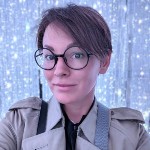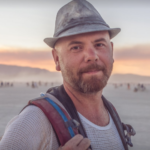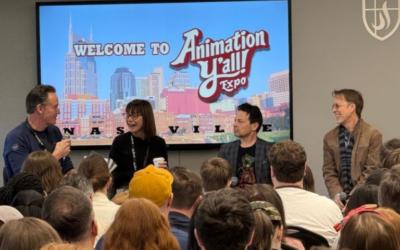Photo by Edward Jenner from Pexels
Of the many industries affected by the COVID-19 pandemic, computer graphics — and specifically film/production — were no exception. At SIGGRAPH 2020, a team of experts got together to lead the Birds of a Feather session “Overcoming production hurdles in CG industry in the age of social distancing,” which was an open discussion that dove into the challenges faced and overcome during the first months of a volatile 2020. We caught up with the session leaders to learn more about developing the discussion and to hear their thoughts on where the industry is going.
SIGGRAPH: Talk a bit about the process for developing your virtual Birds of a Feather presentation, “Overcoming production hurdles in CG industry in the age of social distancing.”
June Kim (JK): Every year, the International Resources Committee (IRC) presents special sessions, such as “SIGGRAPH for Beginners” and “Women in CG”, as well as a series of sessions that explore pressing topics on the state of computer graphics around the world. We also curate Birds of a Feather sessions that we believe will be invaluable for international and diverse groups with interest in computer graphics (CG) and interactivity. “Overcoming production hurdles in CG industry in the age of social distancing” is a topic that we believed to be compelling and vital for all members of the SIGGRAPH community who were encountering abrupt changes to daily and work life amid COVID-19. This session was particularly of use for those at the supervisor and management level, providing the opportunity to learn and share ideas about how other senior members in globally renowned studios could overcome the transition to a new normal from both the technical and people perspectives.
Asiya Gizatulina (AG): Among the IRC-organized sessions, this one in particular was dedicated to CG in the United States, Canada, and Europe, and we thought it would be appropriate to discuss how studios in these regions were dealing with COVID-19 — specifically working from home and the subsequent challenges faced by those teams. We had a general outline of the session and our presenters each focused on changes in their studios and regions, as well as the various solutions they had developed to manage this new way of working.
SIGGRAPH: Since you come from all different areas of the industry how did the group come together? Had you presented together before?
JK: From a session organizer’s point of view, rather than a presenter’s, delivering over 10 sessions annually, with three to four sessions discussing one compelling topic to appreciate the SIGGRAPH community, is not an easy task for us in the IRC. The process of inviting speakers is particularly difficult since we aim to balance speakers who are new and experienced in the SIGGRAPH community, as we stand to promote SIGGRAPH to the wider CGI community globally.
However, the online format of SIGGRAPH 2020 opened up the opportunity to invite many new professionals from many different countries, including Tunisia, Russia, Costa Rica, and many more. Furthermore, interaction via chat made every session more interactive and engaging.
AG: Since we have IRC members from different parts of the world, they are able to help find regional speakers. As June mentioned, with SIGGRAPH 2020 being virtual, this made it much easier for new people to participate and created a domino effect of outreach! One of our members, Jide Ajide, is currently located in Canada and he contacted studios there like DNEG. I’m based in the United States, so I involved Chris Bedrosin — a CG Supervisor at Blur at that time and now a VFX Supervisor at The Mill in Los Angeles — who’s been attending SIGGRAPH for several years and made this his second time presenting. I also reached out to JD Fievet, an animation supervisor at Psyop. JD very kindly helped us get in touch with his long-time friend Alexis Wanneroy, an animation supervisor at Fortiche in Paris. This was their first time presenting for SIGGRAPH, and because they knew each other, they really brought a friendly and relatable vibe to the session!
SIGGRAPH: Which hurdle/change brought forth by the age of social distancing did you find most impactful on your day-to-day business?
Chris Bedrosian (CB): Working remotely really helped me to appreciate the well-being of my team and our artists. Leadership in studio roles is about adapting to each artist and understanding their needs. The isolation of remote work fundamentally altered the attitudes and interactions with teams, and the greatest challenge has been to adjust my approach to working with my team by keeping spirits high and artists involved when they don’t have the luxury of their team or supervisors being just a few steps away.
JD Fievet (JF): Going for 100% remote work had the greatest impact, both in good and bad ways. On the one hand, it’s harder to keep focused and motivated while working from your living room, especially when you also have to manage children who are also on a stay-at-home order. On the other hand, it brought forth a lot of opportunities in working with more geographically distant talent that would have been otherwise difficult to bring to the team.
SIGGRAPH: Which area covered do you think the audience was most intrigued by? Did you receive any notable follow up questions that spurred further discussion that you’d like to share?
CB: I think a lot of people were intrigued by the different technologies we were using to connect remotely, both for meetings and for remote login. For example, Blur was using a combination of Zoom and Google Meet/Hangouts, while The Mill uses Microsoft Teams. Some studios would remote via VPM, others would use HP Remote Graphics Service, and some still only do direct PCoIP to access workstations.
Alexy spoke about a cool new Nvidia remote technology that I was really intrigued by, and I think people were also very interested in the ways studios promote mental health and wellness! Some studios would implement mandatory breaks, while others encouraged group calls to share stories or hang together for a bit. I think it’s become evident that mental wellness has become more important than ever, and I’m glad that studios and their employees are asking these difficult questions that will certainly carry over once we all return to our offices!
JF: It was hard for me to take note of all the participants’ reactions during the presentation. However, I feel that the audience was very interested in hearing about all the technologies put in place in order to achieve efficiency in remote work.
SIGGRAPH: Now that you’ve overcome these production hurdles in the age of social distancing, do you think any of these solutions will carry over once the industry returns to “normal.”
JK: I reckon that social distancing, work from home, and online learning and activities are already new normals in our daily lives and that this lifestyle will not be 100% reversed to conventional “normal” life.
CB: I think I speak for a lot of studios when I say they’ve fantastically expanded their ability to host and support remote artists. Many studios were forced to rapidly scale their capabilities for remotely connecting to internal workstations and servers. As a result, those studios have established the necessary security — and therefore comfort — with secure remote logins and work. I think you’ll see many studios more permanently accommodate artists who prefer to work remotely and have more robust pipelines that allow for these kinds of workflows.
JF: Definitely! Psyop plans to keep on being a “virtual studio” in the future, even after we’re through the pandemic. More generally, I think most artists have found a different way of working, and I would hope some of them found a new work-life balance that’s working for them, which requires a lot of self-discipline. Once all this madness in the world is over, some of the advantages of working remotely will decant into regular industry practices.
SIGGRAPH: If you’ve attended a SIGGRAPH conference in the past, share your all-time favorite SIGGRAPH memory. If you have not, tell us what you enjoyed most about your first!
JK: I have attended SIGGRAPH and SIGGRAPH Asia since 2010, and, thankfully, I have acquired numerous favorite memories at SIGGRAPH! Needless to say, every SIGGRAPH is filled with plentiful cutting-edge work and presentations that stimulate every moment; however, if you ask me what I enjoy most right at this moment, I would say my role serving as an International Resources Committee chair. It’s truly been an enjoyable experience, and I’m grateful to be friends and work together with 20 fabulous members of the IRC as its chair.
CB: It’s hard to pick any one favorite memory, but I would wager my favorite part is always seeing all the friends I’ve made over the years going to SIGGRAPH. In many cases, it’s the only chance I’ll get to see them on any given year! Catching up with old friends while attending sessions or theaters together is always my favorite part of the experience.
JF: This was my first SIGGRAPH conference as part of a panel member, and I really enjoyed for all of us to be able to share experiences and bounce off of each other’s ideas. I even snatched a few good ideas for myself along the way!
AG: I’ve been attending the SIGGRAPH conference since 2015, and every year has been very special to me. It’s hard to think of just one memory! I always enjoy checking out the Emerging Technologies program and, of course, exploring the conference together with old friends that I really only get to see once a year, along with meeting new people from all over the world!
SIGGRAPH: What advice do you have for someone looking to submit to Birds of a Feather for a future SIGGRAPH conference?
JK: I heard many times that Birds of a Feather is the most SIGGRAPH-esque program, and I truly believe that Birds of a Feather conveys the SIGGRAPH sprit the most, as Birds of a Feather are non-juried and attendee-organized sessions. I’d advise you to ask yourself this: Do you have a far-fetched topic you’d like to explore and debate? Do you desire to collaborate with other SIGGRAPH attendees? Then complete a submission to this program! If you want to be part of discussing stimulating and crazy ideas, I can guarantee you’ll enjoy attending Birds of a Feather sessions, as well.
Want to share your production successes as well as trials and tribulations? Select SIGGRAPH 2021 programs are now open for submissions! And, if you’re just curious to hear more virtual production stories, check out the latest episode of our SIGGRAPH Spotlight podcast.
June Kim currently leads the ACM SIGGRAPH International Resources Committee. She is an associate lecturer teaching subjects in the immersive design discipline at the University of New South Wales, Sydney, Australia. Before teaching at the university, Kim worked as a compositor and animator for over ten years in New Zealand.

Asiya Gizatulina is a Full Stack developer with a background in computer animation and interactive media. Gizatulina is a member of the ACM SIGGRAPH International Resources Committee. She is currently finishing her remote CS Master’s program at the Georgia Institute of Technology and is working at a development agency in Los Angeles.
Born and raised in northern France, JD Fievet moved to work in the Los Angeles area a couple years after his graduation. After a few years animating and supervising for Blur Studio, he went on to work on several animated and VFX features at Rhythm and Hues, ReelFX, and Sony Pictures Imageworks. He then transitioned to the commercial/advertising industry, where, after animating and supervising at MPC LA for a couple years, he is now the animation director for Psyop LA and NY, where he oversees the animation on commercials, short films, and cinematics for a wide range of clients.
Chris Bedrosian has been a CG Supervisor with Blur Studio for over 15 years and has over 60 game, television, and film credits to his name. Most recently he supervised over 20 minutes of cinematics for Call of Duty: Modern Warfare, and is hard at work on the second season of the Netflix animated anthology Love Death, and Robots and recently started to work at The Mill as a VFX Supervisor.






